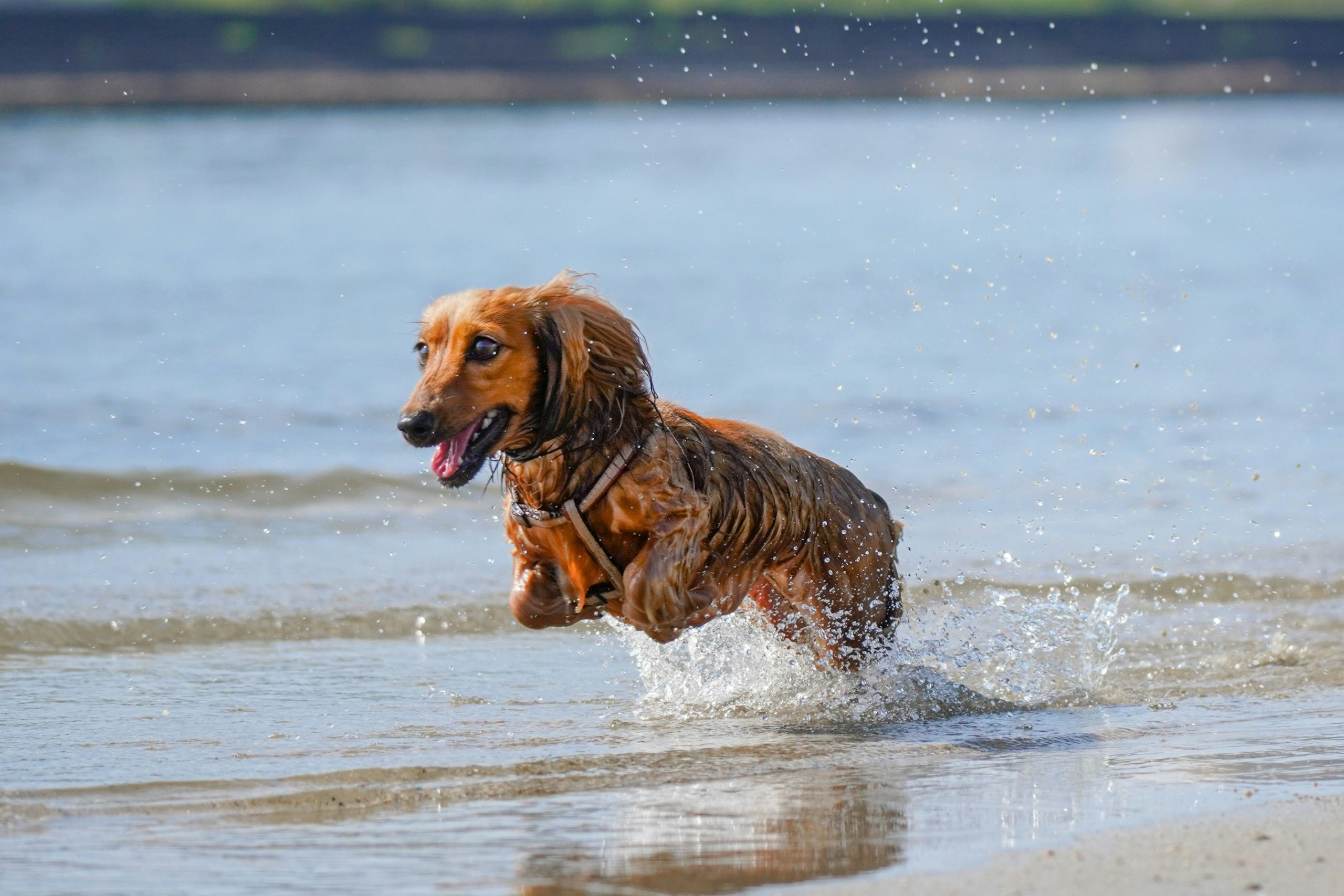Cooling Strategies: Helping Dogs Beat the Heat
Discover effective cooling techniques to help your furry friend recover from heat stroke, including how to recognize symptoms and prevent long-term health consequences.
Introduction to Heatstroke in Dogs
Heatstroke is a severe medical condition that can pose a significant risk to dogs when their body temperature exceeds 104°F. The inability of dogs to sweat profusely like humans makes them highly susceptible to heatstroke. Dogs primarily rely on panting to regulate their body temperature, but in extreme heat conditions, this mechanism may not be sufficient to prevent overheating. For example, brachycephalic breeds , with their shortened airways, struggle to cool down effectively through panting, putting them at a higher risk of heatstroke.
Recognizing the signs of heatstroke promptly is crucial to prevent the condition from escalating. Symptoms such as excessive panting, drooling, lethargy, and vomiting should not be ignored, as they can progress rapidly to more severe outcomes like seizures, collapse, or even organ failure if left untreated. It is essential for dog owners to understand that heatstroke is a time-sensitive emergency that requires immediate intervention to avoid long-term health issues or fatalities. An example of immediate action includes moving the dog to a cooler area, offering water to drink, and seeking urgent veterinary care.
Signs and Symptoms of Heatstroke in Dogs
Heatstroke in dogs can manifest through various signs that indicate a critical rise in body temperature above 104°F. Common symptoms include excessive panting, drooling, rapid heart rate, and weakness. Dogs may also exhibit signs of distress such as vomiting, diarrhea, and collapse. If left untreated, heatstroke can progress rapidly, leading to seizures, organ failure, and even death.
It is crucial for dog owners to be vigilant and recognize the early signs of heatstroke, such as restlessness, heavy panting, and bright red gums. For instance, if a dog is exposed to high temperatures and starts showing signs of heatstroke like disorientation or staggering, immediate action is necessary. Seeking veterinary care promptly and implementing cooling measures are essential steps in managing heatstroke in dogs.
Risk Factors and Vulnerable Dog Breeds
Certain dogs are more prone to heatstroke due to various factors. Breeds with flat faces, such as Bulldogs and Pugs, are at higher risk because of their anatomical features that limit breathing efficiency. Additionally, dogs with thick fur coats or underlying health conditions like obesity, heart disease, or respiratory problems are more susceptible to heatstroke. Overweight dogs have a reduced ability to dissipate heat effectively, making them vulnerable during hot weather conditions.
Understanding the risk factors associated with heatstroke can help dog owners take preventive measures to protect their pets. For example, avoiding strenuous exercise during peak temperatures, providing adequate shade and water, and never leaving a dog in a parked car are crucial preventive actions to reduce the likelihood of heatstroke incidents. By being aware of the specific needs of vulnerable dog breeds and implementing proactive measures, pet owners can help safeguard their furry companions from the dangers of heatstroke.
Effective Cooling Techniques for Heat Stroke Recovery
To effectively cool a dog suffering from heatstroke, it is crucial to understand the appropriate methods that promote recovery and prevent complications. For instance, cool water applied to the foot pads, armpits, and groin areas helps to dissipate heat more efficiently due to the higher concentration of sweat glands in these regions. By focusing on these specific areas, pet owners can facilitate a quicker reduction in body temperature and aid in the dog’s recovery process, ultimately improving the prognosis of the condition.
Moreover, in cases where immediate access to water is challenging, cooling vests or mats designed for pets can serve as valuable tools in managing heatstroke. These specialized products are particularly beneficial in providing sustained cooling effects, ensuring a gradual decrease in body temperature without the risk of overcooling that may result from ice-cold water applications. By incorporating these cooling accessories into the treatment of heatstroke, dog owners can actively participate in the recovery process and contribute to the overall well-being of their furry companions.
Treatment and Monitoring Guidelines
When treating dogs with heatstroke, intravenous fluid therapy is a critical component to combat dehydration and restore electrolyte balance. This therapy helps replenish fluids lost through excessive panting and vomiting, aiding in stabilizing the dog’s condition. For instance, a dog suffering from heatstroke may exhibit signs of dehydration such as dry gums, lethargy, or sunken eyes, warranting the prompt administration of intravenous fluids to prevent further complications.
In addition to fluid therapy, blood tests play a vital role in diagnosing and monitoring dogs with severe heatstroke. These tests can detect various abnormalities like elevated liver enzymes, which indicate potential organ damage due to the heat-induced stress on the body. By closely monitoring these blood parameters, veterinarians can assess the dog’s response to treatment and tailor their approach accordingly. For example, in cases where clotting issues are identified, specific interventions can be initiated to manage these complications effectively.
Moreover, continuous monitoring of key vital signs, including heart rate and respiratory rate, is imperative throughout the treatment of heatstroke in dogs. These parameters offer valuable insights into the dog’s cardiovascular and respiratory status, guiding the veterinary team in adjusting treatment strategies as needed. For instance, a persistently elevated heart rate may indicate ongoing stress or dehydration, prompting the implementation of additional supportive measures to stabilize the dog’s condition. By closely observing these vital signs, healthcare providers can track the dog’s progress and ensure appropriate medical interventions are employed for a successful recovery.
Prognosis and Preventive Measures
When it comes to the prognosis of dogs recovering from heatstroke, the key factors influencing their outcome are how quickly treatment is started and the severity of any organ damage that may have occurred during the episode. For instance, a dog that receives prompt veterinary care and shows limited organ dysfunction is more likely to have a positive prognosis compared to a dog with delayed treatment and significant organ complications. This difference underscores the critical importance of immediate action when heatstroke is suspected, as it can significantly impact the recovery and well-being of the affected dog.
In terms of preventive measures, there are several practical steps that pet owners can take to minimize the risk of heatstroke in their dogs. For example, one crucial preventive measure is to never leave a dog unattended in a parked car, even for a short period, as temperatures inside a vehicle can skyrocket rapidly, putting the dog at serious risk of heatstroke. Providing access to shade and water is another essential preventive strategy, especially during hot weather, as it allows dogs to cool down and stay hydrated, reducing the likelihood of overheating. Additionally, avoiding strenuous activities during peak temperatures and opting for walks during cooler parts of the day can help prevent heat-related emergencies in dogs. By educating pet owners about these preventive measures, the incidence of heatstroke in dogs can be significantly reduced, promoting their overall health and well-being.
Conclusion on Effective Cooling Techniques
In conclusion, when it comes to effectively cooling dogs suffering from heatstroke, immediate action is crucial for a successful recovery. For instance, applying cool water to specific areas like the foot pads, armpits, and groin can aid in reducing the body temperature efficiently. Additionally, utilizing cooling vests or mats designed for pets can provide gradual cooling and contribute to the overall recovery process. These techniques help in preventing further complications and organ damage, highlighting the significance of prompt cooling interventions.
Moreover, understanding the importance of preventive measures is key to reducing the incidence of heatstroke in dogs. For example, educating pet owners about the risks of leaving dogs in parked cars or engaging in strenuous activities during hot weather can significantly lower the chances of heat-related emergencies. By recognizing the specific needs of vulnerable breeds, such as Bulldogs and Pugs, and taking necessary precautions, pet owners can create a safer environment for their furry companions. Therefore, a combination of rapid cooling techniques and proactive preventive strategies is vital in safeguarding dogs from the dangers of heatstroke [3, 5].




